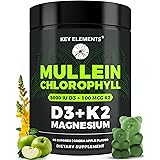Cortisol, often dubbed the “stress hormone,” plays a crucial role in our body’s daily functions, helping us respond to stress, regulate blood sugar, reduce inflammation, and even control our sleep-wake cycle. Produced by the adrenal glands, its levels naturally fluctuate throughout the day, typically peaking in the morning and declining at night. However, when cortisol levels remain elevated for extended periods, it can have significant impacts on overall health and well-being. Understanding these changes is paramount for maintaining good health.
The video above succinctly highlights five key indicators that might suggest your cortisol levels are consistently too high. These signs are often subtle at first but can become more pronounced over time, affecting various aspects of your physical appearance and energy levels. It is important to remember that while these signs can be suggestive, they are not definitive diagnoses, and professional medical advice should always be sought if you have concerns about your health or suspect you might have consistently high cortisol levels.
Understanding Cortisol: Your Body’s Natural Alarm System
Cortisol is a glucocorticoid hormone that is vital for survival. It’s released as part of the body’s ‘fight or flight’ response, preparing you to face perceived threats. This hormone mobilizes glucose (sugar) from your stores, increases blood pressure, and suppresses non-essential functions like digestion and immune response, all to give you an immediate energy boost. A healthy cortisol rhythm is essential; it helps you wake up feeling alert, powers you through the day, and allows you to wind down for sleep. However, modern life often presents chronic stressors, leading to a constant demand for cortisol production, which can eventually lead to an imbalance and consistently high cortisol levels.
Prolonged elevation of this potent stress hormone can disrupt numerous bodily systems. It might affect your metabolism, leading to changes in how your body stores fat and processes sugar. Additionally, chronic high cortisol can weaken your immune system, increase inflammation, and even impact your cognitive functions, such as memory and concentration. Recognizing the physical manifestations of an overactive adrenal response is the first step toward addressing potential imbalances and improving your overall health. Many people experience these symptoms without realizing their connection to stress and cortisol.
Recognizing the Signs of High Cortisol Levels
As the video highlighted, there are several noticeable physical signs that can point towards elevated cortisol levels. These are not just isolated symptoms but often interconnected manifestations of the body trying to cope with prolonged stress or a hormonal imbalance. Let’s explore each of these indicators in more detail, providing a clearer picture of what to look for and why these changes occur when your body is experiencing prolonged high cortisol.
1. Persistent Fatigue and Exhaustion
One of the most common complaints associated with elevated cortisol is persistent tiredness, despite getting adequate sleep. While cortisol is initially energizing, chronic high levels can eventually lead to adrenal fatigue, where the adrenal glands become overworked. This isn’t just ordinary tiredness; it’s a profound sense of exhaustion that isn’t relieved by rest and can significantly impact daily activities. Individuals might feel wired but tired, struggling to fall asleep at night but still waking up feeling drained in the morning, indicating a disrupted cortisol rhythm.
This type of fatigue often manifests as difficulty concentrating, a lack of motivation, and a general feeling of sluggishness throughout the day. Your body is constantly in a state of alert, consuming vast amounts of energy to maintain this heightened state, which ultimately depletes your reserves. When your stress hormone is always high, it can interfere with other hormones and neurotransmitters, further contributing to a pervasive sense of weariness. Addressing this fatigue requires looking beyond just sleep and considering the underlying hormonal drivers.
2. Changes in Facial Appearance: The “Moon Face”
A rounder, fuller face, often referred to as “moon face,” is a classic sign of chronically high cortisol. This occurs due to fluid retention and increased fat deposition in the face, leading to a swollen or puffed-up appearance. The fat pads in the cheeks and around the jawline can become more prominent, losing the natural contours of the face. This particular change can be quite noticeable, often prompting individuals to seek medical advice due to its distinctive appearance.
The accumulation of fat and fluid in the face is directly linked to cortisol’s metabolic effects. Cortisol can cause a redistribution of fat from other parts of the body to the face and trunk, a characteristic often seen in conditions like Cushing’s syndrome, which is caused by prolonged exposure to high cortisol. This facial change is not merely aesthetic; it’s a physiological indicator that warrants attention. Observing such a change in your appearance should certainly prompt further investigation into potential stress hormone imbalances.
3. The Dorsocervical Fat Pad (Buffalo Hump)
Another tell-tale sign that high cortisol levels might be at play is the development of a fat pad between the shoulders, at the base of the neck, often called a “buffalo hump.” This is an abnormal accumulation of adipose tissue in a specific anatomical location. It feels firm to the touch and can be a significant indicator of systemic hormonal disruption, making clothing fit differently and altering posture. The presence of this fat pad is another consequence of cortisol-induced fat redistribution.
Cortisol promotes the storage of fat in specific areas of the body, particularly around the trunk and neck, rather than in the extremities. This selective fat deposition is a distinctive feature of high cortisol conditions. While a buffalo hump can be caused by other factors, its presence, especially when combined with other symptoms, strongly suggests a need to investigate adrenal function. This physical marker can be particularly distressing for individuals but serves as a crucial signal from the body about internal imbalances related to the stress hormone.
4. Increased Abdominal Fat
Gaining weight, specifically around the midsection or abdomen, is a very common sign of chronically elevated cortisol. This isn’t just general weight gain but tends to be visceral fat, which accumulates deep within the abdominal cavity, surrounding organs. This type of fat is metabolically active and is strongly linked to an increased risk of heart disease and type 2 diabetes. High cortisol promotes the storage of this dangerous type of fat, even in individuals who are otherwise lean.
Cortisol directly influences how your body stores fat, often signaling it to hold onto fat around the belly as an energy reserve for perceived ongoing threats. This can be particularly frustrating for individuals who maintain a healthy diet and exercise regime but still struggle with stubborn belly fat. The body’s response to stress, mediated by the stress hormone, effectively prioritizes fat storage in this area, making it a key indicator of internal hormonal disarray. Monitoring changes in waist circumference can be a useful way to track this particular symptom.
5. Distinctive Purple Stretch Marks (Striae)
The appearance of wide, purple or reddish-purple stretch marks on the skin, known as striae, is a less common but highly specific sign of high cortisol. Unlike the thin, silvery stretch marks often associated with rapid weight gain or pregnancy, these cortisol-induced striae are typically broader, deeper, and have a distinctive color. They commonly appear on the abdomen, thighs, breasts, and arms, reflecting a deeper issue than simple skin stretching. The purple hue is due to the underlying blood vessels showing through thinned skin.
High cortisol levels weaken the skin’s collagen and elastic fibers, making the skin thinner and more fragile. This reduced elasticity makes the skin more prone to tearing, resulting in these characteristic stretch marks. The vibrant color indicates active inflammation and damage within the dermal layers. If you notice these particular types of stretch marks without a clear reason like significant, rapid weight gain or pregnancy, it’s a strong signal that your body’s stress hormone regulation might be severely compromised and needs professional evaluation.
Beyond the Symptoms: What Causes High Cortisol?
While recognizing the signs of high cortisol is critical, understanding the potential underlying causes is equally important for effective management. Chronic stress is, by far, the most common culprit in elevating cortisol levels. This can stem from work pressure, relationship issues, financial worries, or even perceived threats from constant news cycles. Our bodies are not designed for the continuous ‘fight or flight’ response that modern life often demands, leading to sustained activation of the adrenal glands and an overproduction of the stress hormone.
Other factors can also contribute to elevated cortisol. Certain medications, particularly corticosteroid drugs used to treat inflammation or autoimmune diseases, can mimic the effects of natural cortisol and lead to similar symptoms. Sleep deprivation, poor diet, excessive exercise, and chronic pain or illness can also trigger the body’s stress response and keep cortisol levels high. Furthermore, rare conditions like Cushing’s syndrome, caused by a tumor on the adrenal or pituitary gland, directly result in extreme high cortisol levels. Therefore, a comprehensive assessment by a healthcare professional is crucial to pinpoint the exact cause and develop an appropriate management plan for individuals experiencing symptoms of elevated cortisol.











